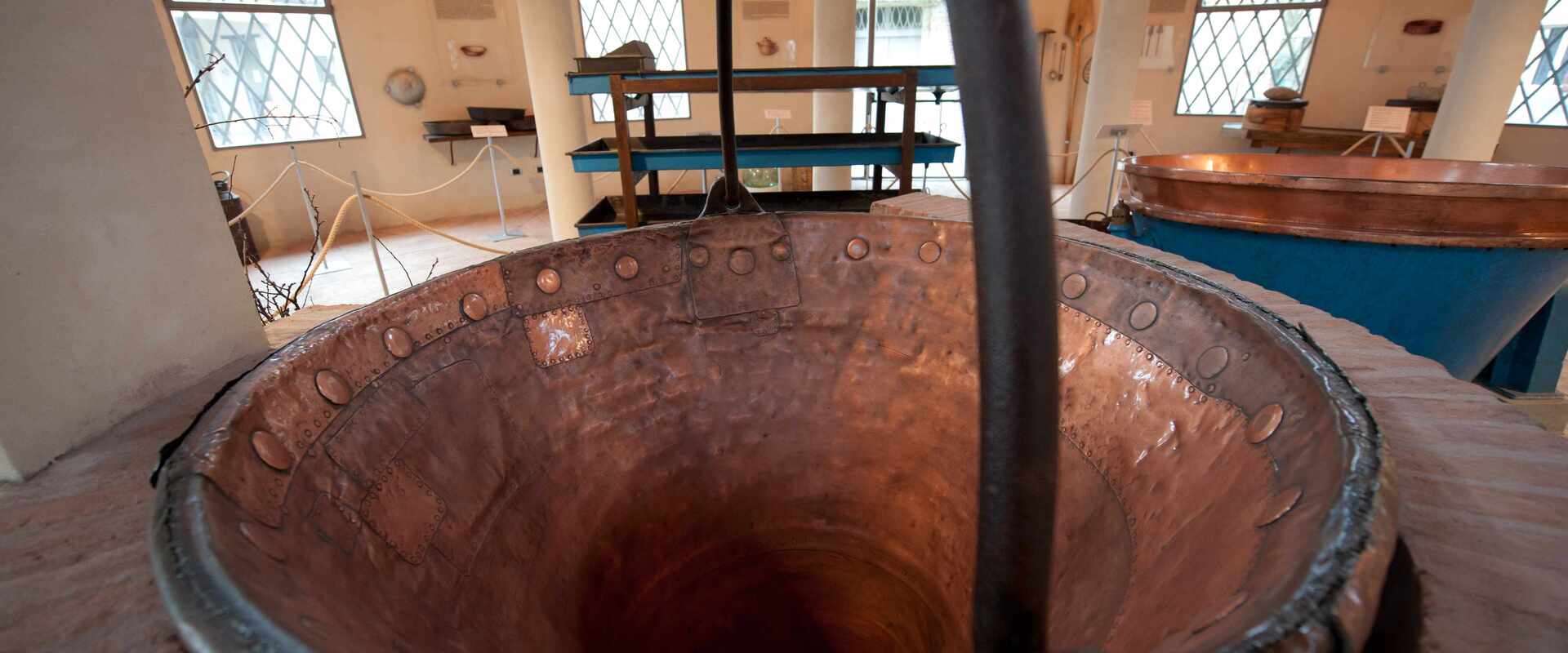Parmigiano Reggiano Museum: the process of making Parmesan cheese
2017-09-22
There’s a lot to see and learn at the
Parmigiano Reggiano Museum in Soragna, in the lower Parma area.
The dairy where the museum is now located was built by order of Prince Casimiro Meli Lupi around 1850. In neoclassical style, with a round floor plan and a colonnade, it is
the only building of its kind in existence today: most cheese dairies in the Parma area were, and still are, square, while in the Reggio area they are octagonal.
The museum’s exhibits, curated by food historian Mario Zannoni, are arranged in
three halls: the older part of the building is set up like an early twentieth-century cheese dairy, with an underground salting room and a milk room on the upper level, buildings that were added to the original cheese dairy after the second world war.
Divided into
eighteen theme areas, the museum begins with a description of the building itself and the story of the process of making Parmigiano Reggiano cheese, then investigates the history of the famous cheese, looks at its cultural and gastronomic aspects and marketing, and concludes with a
Museum Shop where visitors can purchase publications, posters, postcards, tableware, kitchenware and traditional local products, including, of course, Parmigiano Reggiano cheese, complete with its own special tasting kit!
So what happened when the neighbouring farmers
brought the milk to the dairy in the evening and early in the morning? The first part of the museum answers this question, showing us the implements that would have been used in an early twentieth-century cheese dairy. We learn the importance of the
rising of the cream from the milk, left to rest in special containers overnight, after which the cream was skimmed off, a very important step in
production of Parmigiano Reggiano cheese: if the cheese was made without skimming off the cream first, it would explode! Skimming (and salting by osmosis) is essential to keep bacteria at bay and make a long-lasting cheese. The cream skimmed off before making the cheese was used to
make butter, a process which is also illustrated in the museum.
We are shown
which varieties of cattle were raised to produce milk in the area where the cheese is made
(the provinces of Parma, Reggio Emilia, Modena, and Mantua on the right bank of the Po and Bologna on the left bank of the Reno) and discover
whey starter (obtained from the previous day’s cheese, fermented), used to enrich the milk with lactic bacteria to make it into Parmigiano Reggiano, and we are shown the
transformation technique and the necessary implements. With a special section on
inspecting the milk, testing and hygiene in the cheese-making process.
The
two big boilers shaped like upside-down bells on display in the museum are copper containers that were used to cook the milk (copper boilers are still used today, because the metal is an excellent conductor of heat). The oldest one was used directly over a wood-burning fire and dates back to the second half of the nineteenth century; the other one has a double base with an outer jacket of iron and a steam heating system, and was made in 1949.
After illustrating the process of
forming the cheese into rounds in cheese forms or
fascere, the museum illustrates
salting, which is done by immersion, as this is more effective than the dry salting method for preventing undesired fermentation processes, and
ageing, with two tests conducted to check the quality of a round of cheese: hitting it with a hammer to identify rounds of cheese containing fractures or cavities, which are then downgraded, and assessment of the aroma of the cheese, using a screw needle, known as a
goccia or drop, which is inserted underneath the rind of a round of cheese, taken out and sniffed by an expert.
Mariagrazia Villa
Photos: © Musei del Cibo della provincia di Parma
